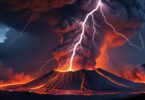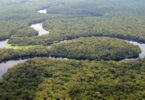Imagine a world powered by the gentle flow of water—a world where energy is generated efficiently and reliably. This vision is not just a dream; it’s a reality made possible by hydropower. As one of the oldest and most established forms of energy production, hydropower harnesses the movement of water to generate electricity, providing a vital source of power that millions rely on daily.
What Is Hydropower?
Hydropower, or hydroelectric power, is the process of generating electricity by utilizing the kinetic energy of flowing or falling water. Typically, this involves constructing dams on rivers, where water is stored in a reservoir. When released, this water flows through turbines, which spin and generate electricity. This method not only produces energy but also plays a role in water management and flood control.
How Does It Work?
The operation of hydropower plants is both straightforward and efficient. Here’s a closer look at the core steps involved:
- Water Storage: Dams create reservoirs that hold large volumes of water. These reservoirs can be filled during periods of high rainfall or snowmelt, ensuring a consistent supply of water.
- Flow Control: When electricity demand rises, operators release water from the reservoir. This controlled release helps manage water levels and prevents flooding downstream.
- Energy Generation: As the water flows through the turbines, it spins them, which are connected to generators. This process converts the kinetic energy of moving water into electrical energy.
- Distribution: The generated electricity is transmitted through power lines to homes, businesses, and industries, powering everyday activities.
Real-World Examples of Hydropower
- Three Gorges Dam, China
The Three Gorges Dam, spanning the Yangtze River, is the largest hydropower project in the world, with an installed capacity of 22,500 megawatts. It generates enough electricity to power millions of homes and plays a significant role in flood control and navigation. - Hoover Dam, USA
Located on the border between Nevada and Arizona, the Hoover Dam is a historic example of hydropower engineering. Completed in 1936, it generates approximately 4,500 megawatts of electricity, providing power to over 1.3 million people in the southwestern United States. - Itaipu Dam, Brazil/Paraguay
The Itaipu Dam, situated on the Paraná River, is one of the largest operational hydropower plants globally. With an impressive capacity of 14,000 megawatts, it produces around 90 million megawatt-hours of electricity annually, serving both Brazil and Paraguay.
Benefits of Hydropower
Hydropower presents numerous advantages that make it an attractive energy source:
- Renewable Energy Source: Hydropower relies on the natural water cycle, making it sustainable as long as there’s water available.
- Low Emissions: It produces minimal greenhouse gas emissions during operation, which is essential in combating climate change.
- Reliable and Flexible: Hydropower plants can quickly adapt to meet changing electricity demands, providing a consistent power supply even during peak usage times.
- Support for Water Management: Besides electricity generation, hydropower assists in managing water resources, aiding irrigation and flood prevention.
Challenges Facing Hydropower
Despite its advantages, hydropower also faces challenges:
- Environmental Impact: Dams can disrupt local ecosystems and fish migration patterns, leading to ecological concerns. Mitigation measures, like fish ladders, are crucial for reducing these impacts.
- Seasonal Variability: Water availability can fluctuate based on seasonal changes and climate conditions, potentially affecting energy production.
- High Initial Costs: Constructing dams and related infrastructure requires significant investment, which can hinder the development of new hydropower projects.
The Future of Hydropower
As we look ahead, hydropower is expected to play a critical role in our energy landscape. Innovations in technology and design are enhancing efficiency and minimizing environmental impacts. From small-scale hydro projects to large dams, the potential for hydropower remains significant as we continue to seek reliable energy sources.
Hydropower is a testament to our ability to harness the power of nature for our benefit. By understanding and supporting this energy source, we can help shape a reliable energy future. As we advance, let’s recognize hydropower not just as a source of electricity but as a crucial element in our energy landscape.








